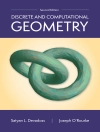This book deals with the genre of geometric design in the Islamic sphere. Part I presents an overview of Islamic history, its extraordinary spread from the Atlantic to the borders of China in its first century, its adoption of the cultural outlook of the older civilisations that it conquered (in the Middle East, Persia and Central Asia), including their philosophical and scientific achievements – from which it came to express its own unique and highly distinctive artistic and architectural forms. Part II represents the mathematical analysis of Islamic geometric designs.
The presentation offers unlimited precision that allows software to reconstruct the design vision of the original artist. This book will be of interest to Islamic academics, mathematicians as well as to artists & art students.
Inhaltsverzeichnis
Foreword.- I Cultural Context.- 1 A History.- 2 The Scientific Contribution.- 3 Religious Dimension.- 4 The Evolution of Style.- 5 Materials and Mediums.- 6 Countries and Regions.- II Mathematical Analysis.- 7 Introduction.- 8 A Worked Example.- 9 An Octagonal Set.- 10 Octagonal Tiles with a Large Star.- 11 Lines and Edges.- 12 Decagonal Patterns.- 13 What Is Correct?.- 14 6-fold Delights.- 15 Two Level Patterns.- 16 Two Mamluk Masterpieces.- 17 Conclusions.- A The Symmetry of a Tiling.- B Key Dates.- C Glossary.- D Copyright.
Über den Autor
Brian Wichmann is the author of a CD/booklet published by World Scientific on geometric patterns. He obtained a DPhil (Oxon) in Mathematics, then had a career in software engineering research at NPL before starting a retirement project of collecting all known classical Islamic geometric patterns. The collection is at tilingsearch.org.
David Wade is the author of a number of books about Islamic Art and related topics. He is also responsible for the web site patterninislamicart.com which has over 4, 000 photographs of patterns in Islamic Art. This is a major source of photographs for the book.












